Serving 999 students in grades 6-8, Bartow Middle School ranks in the bottom 50% of all schools in Florida for overall test scores (math proficiency is bottom 50%, and reading proficiency is bottom 50%).
The percentage of students achieving proficiency in math is 36% (which is lower than the Florida state average of 52%). The percentage of students achieving proficiency in reading/language arts is 32% (which is lower than the Florida state average of 52%).
The student:teacher ratio of 20:1 is higher than the Florida state level of 17:1.
Minority enrollment is 57% of the student body (majority Hispanic), which is lower than the Florida state average of 65% (majority Hispanic).
Quick Stats (2025)
- Grades: 6-8
- Enrollment: 999 students
- Student:Teacher Ratio: 20:1
- Minority Enrollment: 57%
- Overall Testing Rank: Bottom 50% in FL
- Math Proficiency: 36% (Btm 50%)
- Reading Proficiency: 32% (Btm 50%)
- Science Proficiency: 35% (Btm 50%)
- Source: National Center for Education Statistics (NCES), FL Dept. of Education
School Overview
Bartow Middle School's student population of 999 students has grown by 12% over five school years.
The teacher population of 50 teachers has stayed relatively flat over five school years.
Grades Offered
Grades 6-8
Total Students
999 students

Gender %

Total Classroom Teachers
50 teachers
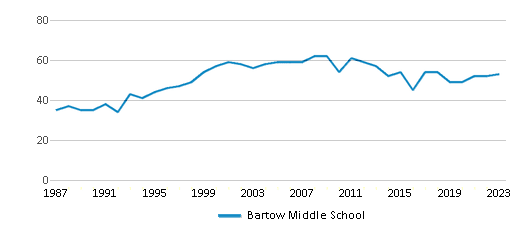
Students by Grade
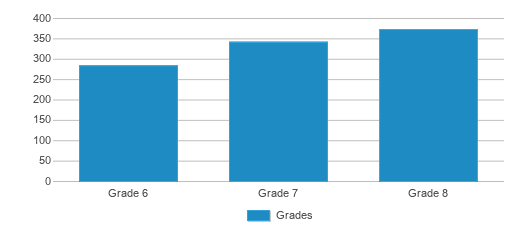
School Rankings
Bartow Middle School ranks within the bottom 50% of all 3,704 schools in Florida (based off of combined math and reading proficiency testing data).
The diversity score of Bartow Middle School is 0.68, which is less than the diversity score at state average of 0.70. The school's diversity has stayed relatively flat over five school years.
Overall Testing Rank
#3079 out of 3704 schools
(Bottom 50%)
(Bottom 50%)

Math Test Scores (% Proficient)
36%
52%
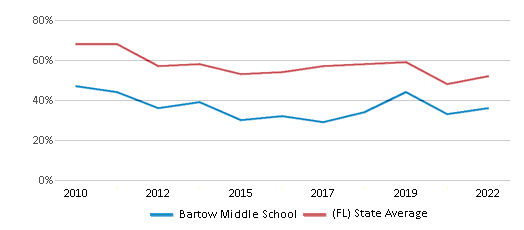
Reading/Language Arts Test Scores (% Proficient)
32%
52%
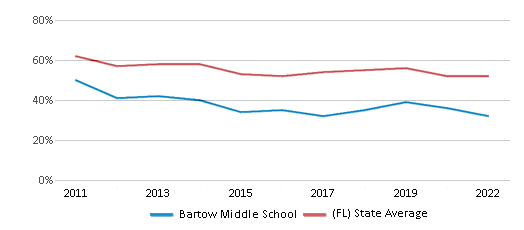
Science Test Scores (% Proficient)
35%
52%
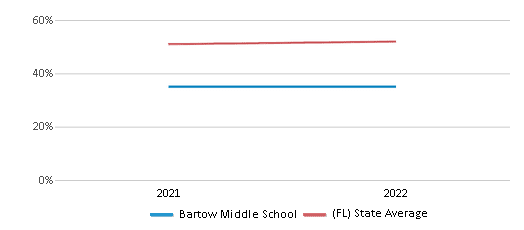
Student : Teacher Ratio
20:1
17:1
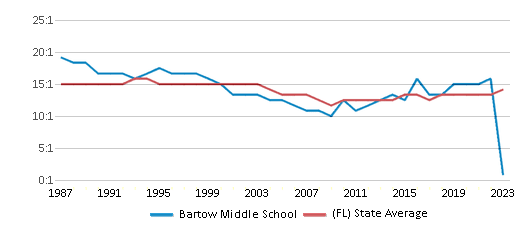
American Indian
n/a
n/a
Asian
1%
3%
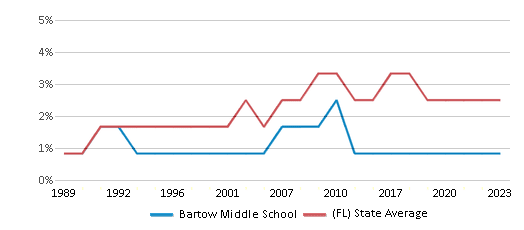
Hispanic
31%
37%

Black
22%
21%
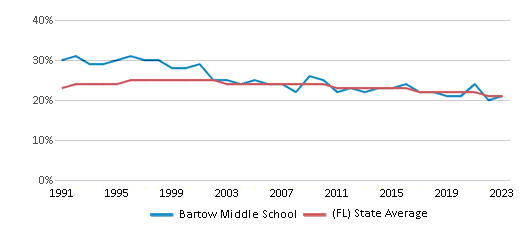
White
43%
35%
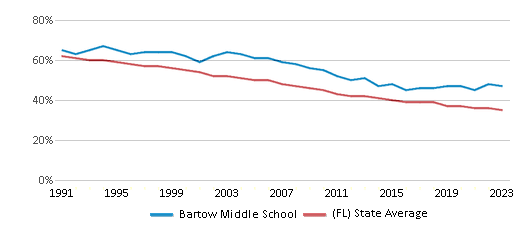
Hawaiian
n/a
n/a
Two or more races
3%
4%
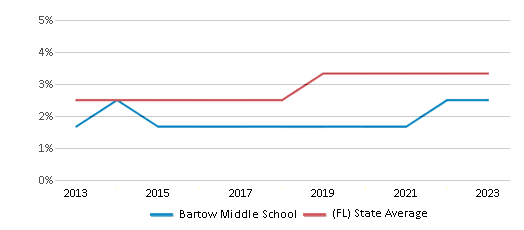
All Ethnic Groups
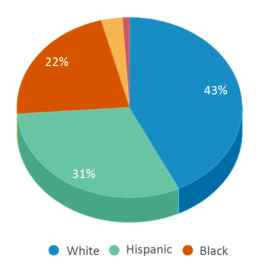
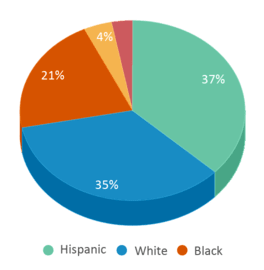
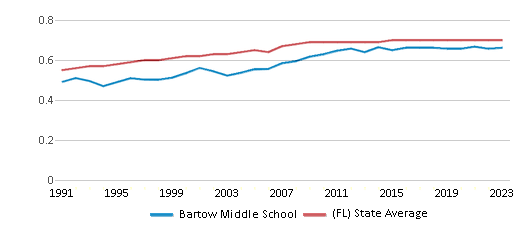
Participates in the National School Lunch Program (NSLP)
Yes
Eligible for Free Lunch
70%
47%
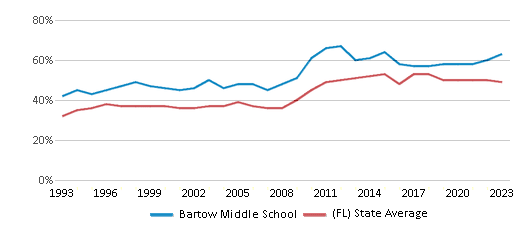
Eligible for Reduced Lunch (14-15)
5%
5%
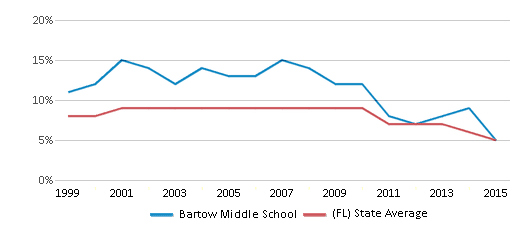
School Statewide Testing
School District Name
Source: National Center for Education Statistics (NCES), FL Dept. of Education
Profile last updated: 02/09/2025
Frequently Asked Questions
What is Bartow Middle School's ranking?
Bartow Middle School is ranked #3079 out of 3,704 schools, which ranks it among the bottom 50% of public schools in Florida.
What schools are Bartow Middle School often compared to?
Bartow Middle Schoolis often viewed alongside schools like Compass Middle Charter School by visitors of our site.
What percent of students have achieved state testing proficiency in math and reading?
36% of students have achieved math proficiency (compared to the 52% FL state average), while 32% of students have achieved reading proficiency (compared to the 52% FL state average).
How many students attend Bartow Middle School?
999 students attend Bartow Middle School.
What is the racial composition of the student body?
43% of Bartow Middle School students are White, 31% of students are Hispanic, 22% of students are Black, 3% of students are Two or more races, and 1% of students are Asian.
What is the student:teacher ratio of Bartow Middle School?
Bartow Middle School has a student ration of 20:1, which is higher than the Florida state average of 17:1.
What grades does Bartow Middle School offer ?
Bartow Middle School offers enrollment in grades 6-8
What school district is Bartow Middle School part of?
Bartow Middle School is part of Polk School District.
School Calendar
View the Bartow Middle School yearly calendar below. Note key dates such as:
Event
Date
Spring Break Week - No School
March 17, 2025 (Monday)
Last Day For Students - Student Early Dismissal
May 29, 2025 (Thursday)
School Reviews
5 8/14/2019
This School is becoming a great place it''s very fun and gives us the chance to express ourselves.
5 4/7/2017
A lot of great changes happening at Bartow Middle School. Nice parent and student events, staff and teachers that are helpful and care about my child succeeding. They have a great music program, agriculture, and pre-med classes. I am encouraged that our future students have a nice school to go to.
2 9/1/2016
no one would ever shut up long enough for the teachers to teach and most of the teacher stopped caring and there was so much swearing and fighting as well as smoking it was terrible.
5 3/22/2014
i think this school is great. I mean it don't have a good grade. but they teach like any other schools. I like it. people cant just judge from a school grade.
2 6/6/2011
THIS IS THE WORST SCHOOL I HAVE EVER EXPERIENCED IN MY LIFE. IF YOU HAVE A CHOICE ...DO NOT SEND YOUR CHILD HERE. I HAVE NOT HAD EVEN ONE GOOD EXPERIENCE SINCE MY CHILD HAS ATTENDED THIS 'SCHOOL'...IT IS BAD FROM THE PRINCIPAL TO THE STUDENTS. HOW CAN SUCH A PLACE AND 'PEOPLE' EXIST?
Review Bartow Middle School. Reviews should be a few sentences in length. Please include any comments on:
- Quality of academic programs, teachers, and facilities
- Availability of music, art, sports and other extracurricular activities
Recent Articles

What Is A Charter School?
Explore the world of charter schools in this comprehensive guide. Learn about their history, how they operate, and the pros and cons of this educational innovation. Discover key facts about charter schools, including admission policies, demographics, and funding, as well as what to look for when considering a charter school for your child.

10 Reasons Why High School Sports Benefit Students
Discover the 10 compelling reasons why high school sports are beneficial for students. This comprehensive article explores how athletics enhance academic performance, foster personal growth, and develop crucial life skills. From improved fitness and time management to leadership development and community representation, learn why participating in high school sports can be a game-changer for students' overall success and well-being.

February 05, 2025
Understanding the U.S. Department of Education: Structure, Impact, and EvolutionWe explore how the Department of Education shapes American education, from its cabinet-level leadership to its impact on millions of students, written for general audiences seeking clarity on this vital institution.









